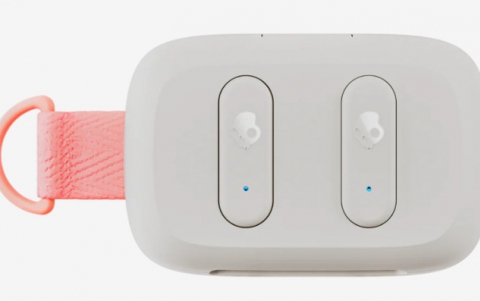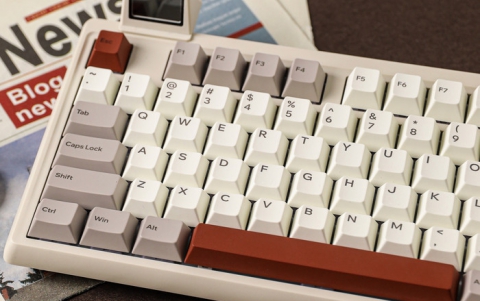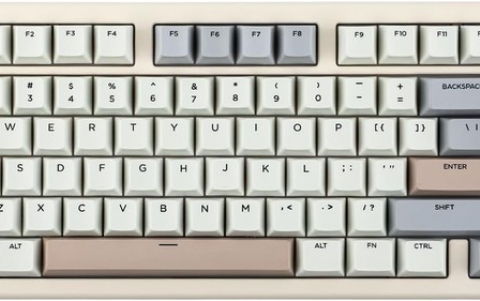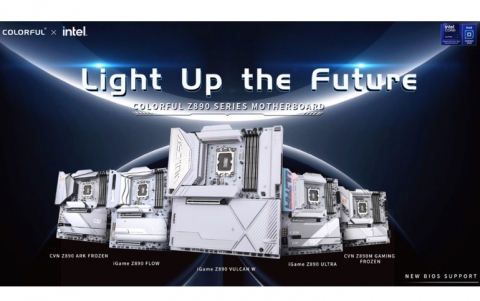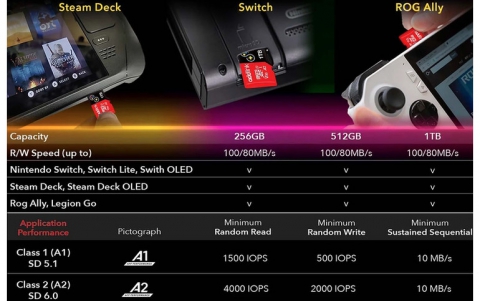Yamaha CRW3200E CD-RW
10. Audio Master Quality Recording
Audio Master Quality Recording
The new series of recording drives from Yamaha feature a "new" recording mode named "Audio Master Quality Recording", according to the Yamaha marketing department. It's main purpose, as claimed by Yamaha itself, is the offering of superior recording quality for disks intended to be used for the seer reproduction of audio on regular home CD and car players. This new recording mode of audio disks is expected to offer reproduction of music with reduced jitter on devises whose power supply subsystem is sensitive to electric current fluctuations due to abrupt motor/pick-up movements in those cases where the reading of a disk is problematic.
- Nero Audio Master Q.R. writing mode
 Nero
is the only software ,for now, that supports fully Yamaha's Audio Master Q.R
mode. At the 'Write' Tab you will find 3 writing methods (DAO/TAO/Audio Master
Q.R) and when "Audio Master Q.R." is selected the writing speed drop
down menu dissapears. The writing speed is fixed at 4x for all burns now:
Nero
is the only software ,for now, that supports fully Yamaha's Audio Master Q.R
mode. At the 'Write' Tab you will find 3 writing methods (DAO/TAO/Audio Master
Q.R) and when "Audio Master Q.R." is selected the writing speed drop
down menu dissapears. The writing speed is fixed at 4x for all burns now:

Also since the useable empty capacity is reduced down to 66minutes, the 'Disc-Info' function is also shows accordinaly:
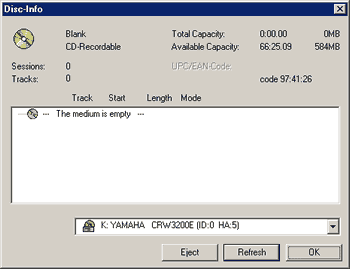
The theory behind this entire "new" recording mode is relatively simple. According to the original red-book standard, the linear velocity of the laser beam, at 1x reading speed, over the CD's surface is allowed to vary between 1.2 and 1.4 meters per second. Anything between these extreme values is acceptable and all CD players, even the most archaic ones, are expected to be compliant when a disk is recorded at such a speed. This speed might even be non-constant for a single disk, as long as its variation is limited within certain bounds prescribed by the above standard.
As some of the older among this audience might remember, the first recordable disks where of a lower capacity, in the area of 63 minutes. Remember this, as we will move on to our technical explanation below.
First, let us explain somewhat intuitively what is supposed to be "jitter" when it comes to the reproduction of an audio disk. Some of the material below although well understood by an electrical engineer, might seem chinese to a regular CD recorder user. But don't panic, all you will have to understand here is some simple elementary arithmetic arguments.
The 0's and 1's of a data or a WAV file are transformed when written to a recordable disk. The final series of 0's and 1's that are actually recorded as "pits" and "lands" on the surface of a CD contain additional error correcting bits. The length of a recorded "pit" depends partly on the recording strategy employed by the particular firmware of a specific recorder and mainly on the linear velocity of a disk at the exact point where recording takes place. This is exactly the same as the reading speed, because the same amount of bits needs to be read from the disk in the same amount of time!
Consequently, when recording takes place at a higher linear speed, the length of the pits is proportionally greater. In particular, at 1.4m/s, this length is about 15% greater than the length of the same pit at 1.2m/s.

In real life, the pit length depends on several factors and matches the theoretical figure within a certain amount of uncertainty (error). During a disk reproduction, this type of errors is reported as "jitter". In "digital" terms, these errors are reported as C1/C2 errors.
Using a photodetector on the analog signal that passes through the laser diode on the pickup mechanism of a drive, increased jitter is seen as more "blurring" in the following pictures taken from a Yamaha white paper:

|
Audio Master Quality Recording
|
Conventional Recording
|
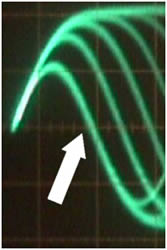 |
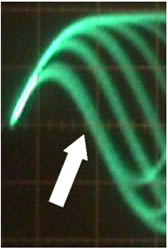 |
It has been found by laboratory experiments that this uncertainty is mostly irrelevant to the pit length. So a 15% longer pit contains about 15% less pit-length uncertainty! This is the crucial point in all of our discussion here. That is: a 15% recording/reading speed increase results to about 15% less errors in the pit-length.
A somewhat simplistic argument might suggest an analogous decrease in jitter. In fact, the Yamaha marketing department seems to take into account the uncertainty on both sides of a pit and claims (an erroneous according to our opinion) 30% jitter decrease when recording at a 15% increased linear speed. Overall, this new Yamaha "discovery" seems to make use of an old recording mode that was presumably in use several years ago during the initial market introduction of commercial recorders.
The end-user should be aware of the fact that using this recording mode disk space on a disk is wasted! As more space is devoted for each pit, a smaller number of pits can be recorded on the same disk surface; consequently you will be able to "put" less music on the same disk.
You will be able to record just 63 minutes of music on a disk instead of 74 minutes that are available when recording takes place at a speed of 1.2m/s. Expect analogous (disappointing) results for 80min disks. We intend to thoroughly test this new "Audio Mastering" recording mode in a couple of weeks. Come back soon to read the test results. We promise you a highly interesting technical review :-)

